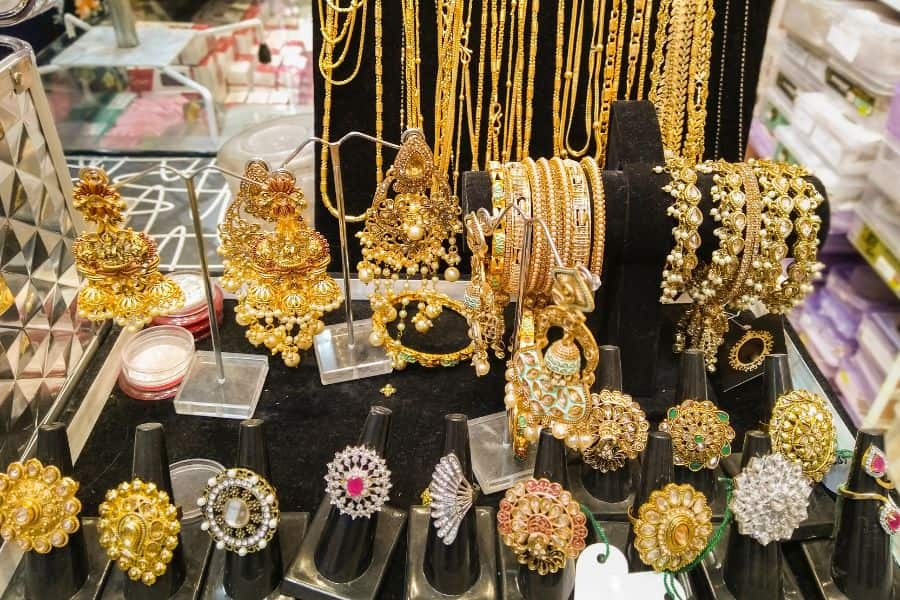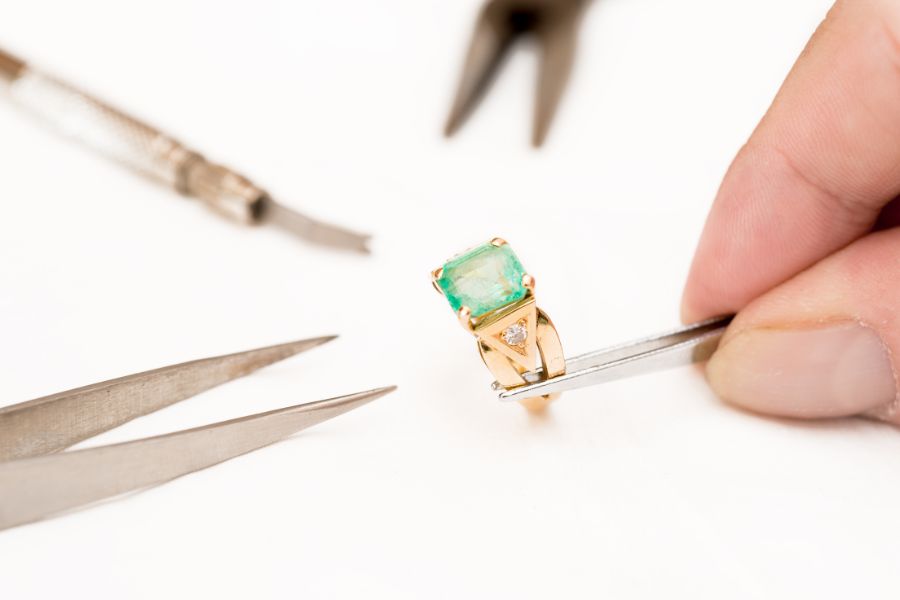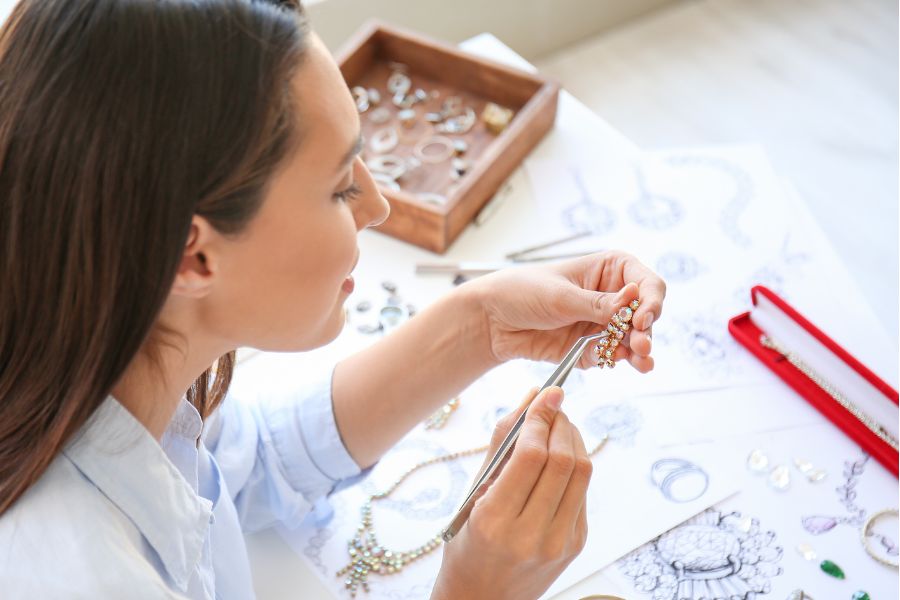Jewelry is more than just adornment; it’s a statement of style and elegance. The magic behind this allure often lies in the stone setting, a crucial element that transforms a simple gem into a dazzling centerpiece.
Dive into the world of jewelry craftsmanship as we explore 10 captivating types of stone settings. Whether you’re a jewelry lover or a design enthusiast, understanding these settings will enhance your appreciation for the art of fine jewelry.

A stone setting refers to how a gemstone is held in place within a piece of jewelry. It's more than just a functional aspect; it also influences the overall look and feel of the piece. The setting must secure the gem while complementing the design of the jewelry. Different types of stone setting can dramatically change the appearance of a gemstone, making it look larger, more sparkly, or more subtle.

The choice of stone setting impacts not just the aesthetics but also the durability and comfort of the jewelry. Here are 10 popular types of settings for stones, each offering distinct characteristics.
The prong setting, also known as a claw setting, is one of the most popular and classic types of stone settings. It involves small metal claws that grip the gemstone from the sides. These prongs allow maximum light to enter the stone, enhancing its brilliance. Prong settings are commonly used in engagement and solitaire rings because they prominently showcase the stone.
Bead setting is a jewelry technique where tiny metal burrs are raised around a gemstone using a graver. These burrs are pushed over the stone's edge and then polished into small beads that secure the stone in place. This method is often used to create intricate designs with multiple small stones, offering a refined, elegant look in rings, bands, and other jewelry pieces.
The bezel setting encircles the gemstone with a metal band, securing it firmly in place. This type of stone setting provides excellent protection for the stone, covering the edges and preventing chipping. Bezel settings can create a modern and sleek look, making them ideal for contemporary jewelry designs. They are also a good choice for those who lead an active lifestyle.
In a bar setting, gemstones are held between vertical metal bars, which are usually made of the same material as the band. This setting offers a clean and modern appearance, allowing more of the stone's surface to be visible. Bar settings are often used in rings, bracelets, and earrings, providing a stylish and secure way to display multiple stones in a row.
The pave setting involves covering the jewelry piece with small gemstones set closely together, creating a continuous sparkle. Tiny prongs or metal beads hold each stone in place. Pave settings are popular for creating a glittering effect and are commonly used in engagement rings and wedding bands to add extra shine and elegance.
The tension setting holds the gemstone in place using the tension of the metal band. The stone appears to float between the ends of the band, giving it a dramatic and modern look. This type of setting is known for its minimalist design and the way it emphasizes the stone's clarity and brilliance. Tension settings are a unique choice for those looking for something different.

In a flush or burnish setting, the gemstone is set flush with the surface of the metal, with no prongs or bezels visible. The stone is held in place by pushing the metal over the edges of the stone. This setting creates a sleek and smooth appearance, perfect for those who prefer a low-profile design. It is also practical for daily wear as it reduces the chance of the stone catching on objects.
The invisible setting is a sophisticated technique in which the gemstone is set without visible metal prongs or settings. Behind the scenes, a special grid or framework secures the stones in place, making the setting appear seamless. This type of setting creates an illusion of a continuous surface of gemstones, offering a luxurious and seamless look. Invisible settings are often used in high-end jewelry and custom designs.
A cluster setting involves grouping several small gemstones together to form a larger, more striking design. The stones are set close together, often in a flower or burst pattern, to create the illusion of a single large gem. This setting is popular for adding a dramatic and eye-catching effect to rings and pendants. Cluster settings are also a cost-effective way to achieve a high-impact look.
In a channel setting, gemstones are set into a metal channel that runs along the band or setting. The stones are aligned in a row, and the metal walls of the channel hold them securely in place. This setting is ideal for creating a smooth and uninterrupted line of stones, making it a popular choice for wedding bands and eternity rings. Channel settings offer a sleek and modern appearance while providing excellent protection for the stones.
Understanding the different types of stone settings can greatly enhance your jewelry choices. Each setting type has its own unique style and benefits, from the classic prong setting to the sophisticated invisible setting. By learning about these types of stone settings, you can better appreciate the craftsmanship behind your jewelry and make more informed decisions when selecting or designing pieces. Whether you prefer the sparkle of a pave setting or the sleek look of a bezel setting, knowing your options will ensure you find the perfect setting for your gemstones.
The most popular prong setting is the classic four-prong setting. This design features four metal claws that secure the gemstone from each side, allowing maximum light to enter and enhance the stone's brilliance. It's widely used in engagement rings and solitaire settings because it effectively showcases the gem while keeping it securely in place.
Yes, a stone setting can be changed after the jewelry is made, but it often requires professional help. Jewelers can adjust or replace settings to update the design or improve security. However, the process can be complex and may involve resizing or modifying the jewelry, so it's best to consult with a skilled jeweler to ensure the changes are done properly.
The key difference between bead and prong settings is how the gemstones are secured. Bead setting uses small metal beads raised from the surrounding metal to hold the stone in place, often used for smaller stones and intricate designs. Prong setting uses metal claws that grip the stone from the sides, allowing more light to pass through, making it ideal for larger stones like those in solitaire rings.
Master how to make a spoon ring with our intuitive guide. Effortlessly turn vintage flatware into decorative pieces to elevate your style and make a statement.
Read MoreWondering why does my nose ring smell? Discover the common culprits and Learn expert tips on how to effectively clean and maintain your nose ring in style.
Read MoreLearn how to put in a nose ring safely and stylishly. This guide covers various types of nose rings and offers step-by-step instructions to enhance your style.
Read MoreMaster the art of how to make silicone rings with our easy-to-follow steps. From choosing the right materials to the final touches, we’ve got you covered.
Read More